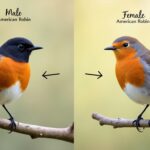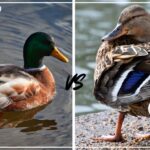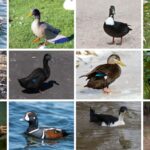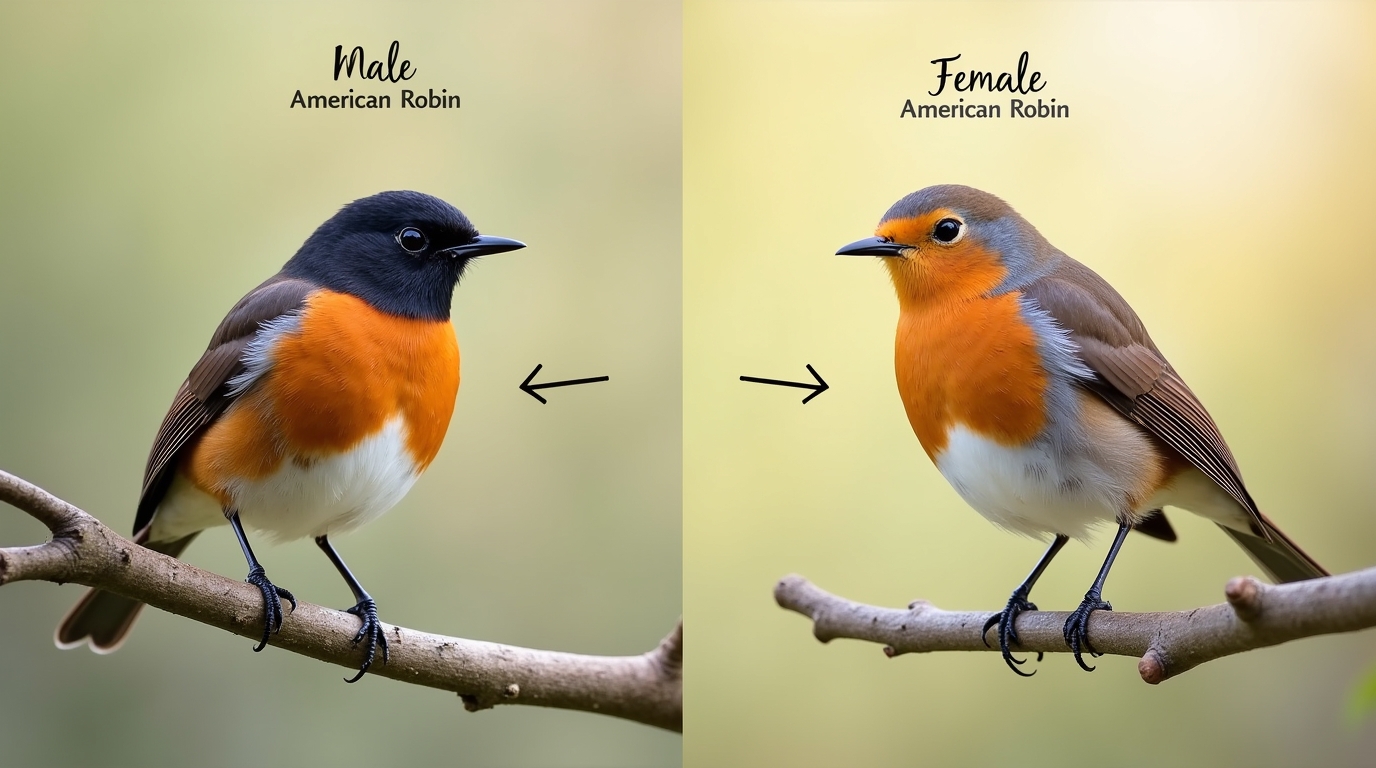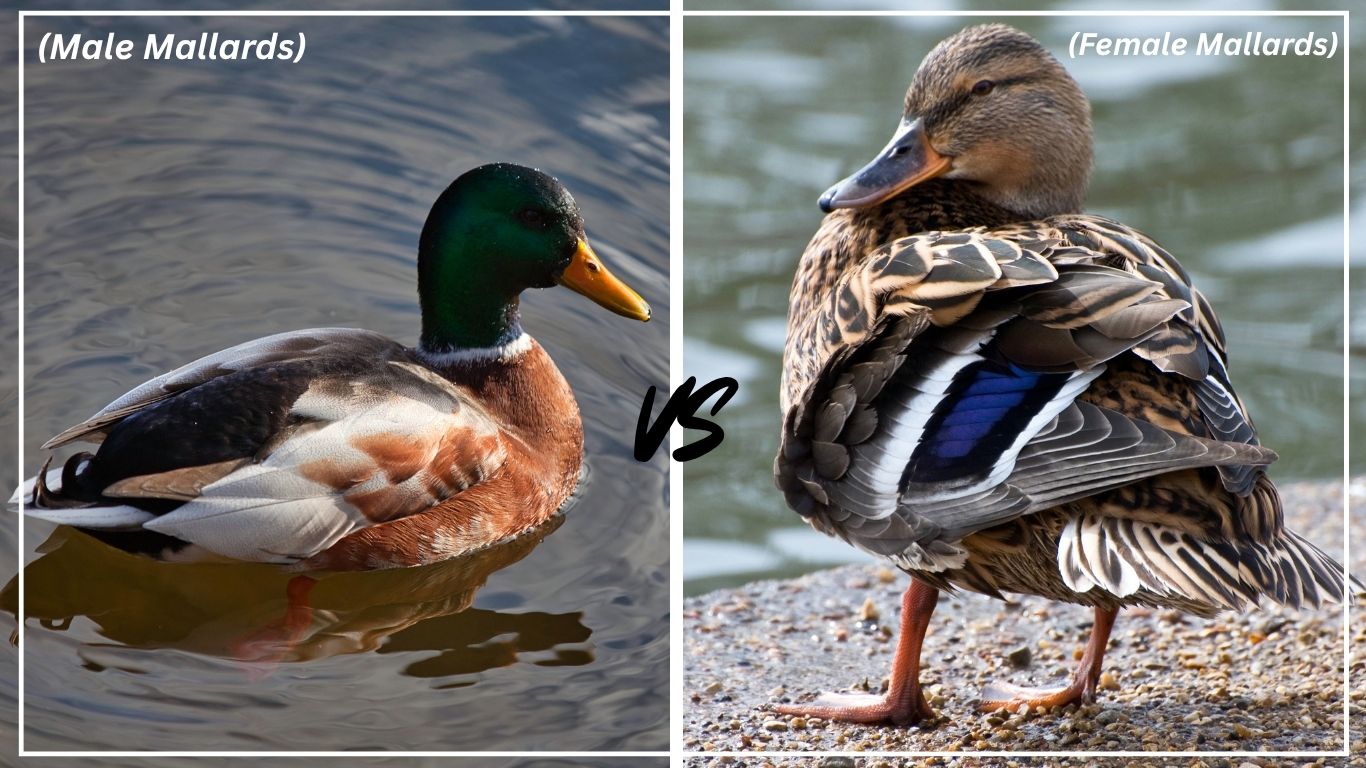Australia is full of amazing birds that people see every day in parks, backyards, forests, and by the beach. These birds come in many colors, shapes, and sizes. Some sing sweet songs, while others have loud calls or funny habits. In this article, you’ll learn about 21 common Australian birds. For each bird, we’ll share how to recognize it, where it lives, how it acts, and what it eats. It’s a great guide for bird lovers of all ages.
1. Australian Magpie

The Australian Magpie is one of the most familiar and beloved birds in the country. Known for its bold black and white feathers and beautiful singing, this bird is a common sight in parks, gardens, and schoolyards. It’s not only admired for its looks and voice but also remembered for its cheeky behavior, especially during the nesting season when it bravely protects its young. The magpie is a true symbol of everyday life in Australia.
Identification
The Australian Magpie is a medium-sized bird with glossy black and white feathers, a sharp beak, and bright red eyes. It has a strong body and walks confidently on the ground. Both males and females look similar, but females might have softer shades of grey or brown mixed in.
Habitat
Magpies are found across most of Australia, from cities and suburbs to farms and open countryside. They like grassy areas with trees nearby where they can find food and build their nests. You’ll often see them in schoolyards, parks, and even front lawns.
Behavior
Magpies are smart and social birds. They are well known for their beautiful, warbling songs, especially in the early morning. During the breeding season (spring), some magpies may swoop at people to protect their nests, which makes them famous in Australia. They live in family groups and often return to the same area year after year.
Diet
Magpies mostly eat insects, worms, beetles, spiders, and small animals they find in the soil. They may also eat fruit, seeds, and leftover human food in urban areas. They use their strong beaks to dig and pick food from the ground.
2. Laughing Kookaburra

The Laughing Kookaburra is one of Australia’s most iconic birds, famous for its loud, laughing call that sounds like human laughter. Often heard at dawn and dusk, their call is a familiar sound in both cities and the bush. With a large head and strong beak, the kookaburra is a skilled hunter. These birds are loved for their unique voice and bold presence, making them a favorite among locals and visitors alike.
Identification
The Laughing Kookaburra is a large bird with a sturdy body, big head, and a thick beak. Its feathers are mostly white and brown with some blue on the wings. It has a dark eye stripe and a pale belly, giving it a friendly but alert look.
Habitat
Kookaburras live in forests, woodlands, parks, and gardens across eastern and southern Australia. They like places with tall trees and open areas where they can easily spot prey from a branch.
Behavior
These birds are famous for their loud, laughing call, which they use to mark their territory. They often call in groups at dawn or dusk. Kookaburras are brave and curious, often seen sitting calmly on fences, branches, or power lines, watching the ground for movement.
Diet
Laughing Kookaburras are meat-eaters. They feed on insects, worms, small reptiles, frogs, and even tiny birds or mice. They catch their prey with their strong beak and often beat it against a surface before eating.
3. Rainbow Lorikeet

The Rainbow Lorikeet is a dazzlingly colorful parrot found in many parts of Australia. Its bright feathers and lively personality make it a favorite in gardens and parks. These birds are often noisy and energetic, flying quickly between flowering trees and shrubs as they feed.
Identification
Rainbow Lorikeets have a bright blue head and belly, a vibrant orange-red chest, and green wings and back. Yellow patches on their sides add to their colorful look. Their curved red beak and orange eyes make them easy to spot from a distance. Their size is medium, about 11 inches long.
Habitat
These birds prefer coastal rainforests, woodlands, and areas with flowering trees, especially eucalyptus and banksias. They are also common in urban parks and gardens where nectar sources are plentiful.
Behavior
Rainbow Lorikeets are highly social and often gather in noisy flocks. They are very active, moving quickly from tree to tree while feeding. Their playful nature includes hanging upside down and chasing each other during flight. They also communicate with a variety of squawks and chirps.
Diet
Their diet mainly consists of nectar and pollen from flowers, which they collect with their specialized brush-tipped tongues. They also eat soft fruits, berries, and sometimes small insects, which provide extra protein.
4. Sulphur-crested Cockatoo

The Sulphur-crested Cockatoo is a large, striking white parrot with a bright yellow crest on top of its head. Known for its loud, raucous calls, this bird is a common and well-loved sight across much of Australia. Sulphur-crested Cockatoos are bold, intelligent, and often seen in noisy groups.
Identification
This cockatoo is mostly white with a strong, curved grey beak and dark eyes. Its most noticeable feature is the tall, yellow crest that it can raise or lower to show excitement or alertness. Adults are about 45 to 50 cm long, making them one of the larger parrots in Australia.
Habitat
Sulphur-crested Cockatoos live in a wide range of habitats including forests, woodlands, urban parks, and gardens. They adapt well to human environments and are often seen around cities and rural areas alike.
Behavior
They are very social and usually travel in flocks, often noisily flying from tree to tree. These cockatoos are known for their playful and curious nature, sometimes mimicking human speech or sounds. They also use their powerful beaks to chew on wood and other materials.
Diet
Their diet includes seeds, nuts, fruits, berries, and roots. They may also eat insects and larvae, especially when feeding young. In urban areas, they sometimes feed on scraps of food left by humans.
5. Galah (Rose-breasted Cockatoo)

The Galah, also known as the Rose-breasted Cockatoo, is a beautiful and common Australian bird easily recognized by its soft pink chest and grey wings. Known for its playful and social nature, the Galah is often seen in large flocks, especially in open countryside and urban areas.
Identification
Galahs have a pink face, chest, and underparts with light grey wings, back, and tail. They have a short crest that can be raised, a pale grey beak, and dark eyes. Adults measure around 35 cm in length.
Habitat
Galahs are widespread across most of Australia and adapt well to different environments. They live in open woodlands, grasslands, farmlands, and suburban parks and gardens.
Behavior
These birds are highly social and usually found in noisy flocks. Galahs are known for their playful and curious behavior, often seen engaging in aerial acrobatics and mutual preening. They can be quite vocal with a range of whistles and squawks.
Diet
Their diet mainly consists of seeds from grasses and crops, roots, berries, and some insects. They forage on the ground and sometimes feed on fallen fruits.
6. Willie Wagtail

The Willie Wagtail is a small, active bird with striking black and white coloring and a long, constantly wagging tail. Known for its bold and curious behavior, it is a familiar sight in gardens, parks, and open woodlands throughout Australia.
Identification
Willie Wagtails have glossy black feathers on their head, back, wings, and tail, with a white belly and white patches on the wings. Their long tail is often seen flicking from side to side. They measure about 19 cm in length.
Habitat
They are found in a variety of habitats including open forests, grasslands, wetlands, and urban areas. Willie Wagtails prefer open spaces with scattered trees or shrubs and often stay near water sources.
Behavior
These birds are very territorial and fearless, often seen chasing away larger birds or animals from their territory. They are agile fliers and hunt by darting through the air or running on the ground to catch insects. Their tail-wagging is thought to help flush out prey.
Diet
Willie Wagtails mainly feed on insects such as flies, beetles, and caterpillars. They catch prey in the air or pick it off the ground and vegetation. Occasionally, they eat small spiders and other small invertebrates.
7. Superb Fairy-wren

The Superb Fairy-wren is a small, vibrant bird known for the striking bright blue feathers of the males during breeding season. These tiny birds are lively and often seen hopping through dense shrubs and gardens.
Identification
Male Superb Fairy-wrens display brilliant electric blue and black plumage on their head, back, and tail during breeding season, while females and non-breeding males have soft brown and grey feathers. They are small, about 14 cm long.
Habitat
They are commonly found in scrublands, woodlands, and suburban gardens, particularly where there is dense low vegetation for cover and nesting.
Behavior
Superb Fairy-wrens live in small groups and are very active, often flitting quickly through bushes. Males are known to perform courtship displays by showing off their bright feathers to attract females. They are shy and quick, often darting into thick cover when disturbed.
Diet
Their diet mainly includes small insects and spiders, which they hunt among leaves and branches. They may also eat small seeds, especially in winter when insects are less available.
8. Noisy Miner

The Noisy Miner is a bold and lively bird, well known for its constant chattering and aggressive behavior. It’s a native honeyeater that plays a big role in pollinating many Australian flowering trees. These birds are highly social and often seen in noisy flocks defending their territory with great energy. Their strong presence in urban parks and woodlands makes them a very common and easily recognizable Australian bird.
Identification
Noisy Miners have a sleek grey body with a black crown and throat, which makes their face look like it’s wearing a mask. They sport bright yellow-orange patches behind their eyes and have matching yellow legs and beak. Their size is medium, about 25 to 30 cm long. Their sharp features and bold colors make them easy to spot.
Habitat
They thrive in a wide range of habitats including open woodlands, eucalyptus forests, suburban parks, and gardens. They prefer places with flowering gum trees, which provide them with nectar food sources. Noisy Miners adapt very well to human-modified landscapes, often taking over green spaces near cities and towns.
Behavior
As their name suggests, Noisy Miners are very vocal, making a variety of loud, harsh calls and chattering sounds throughout the day. They are aggressive defenders of their territory and often mob or chase away other birds and even small animals. These birds live in cooperative social groups that work together to protect their feeding areas and nesting sites.
Diet
Noisy Miners mainly feed on nectar from eucalyptus and other native flowering trees, which they collect using their brush-tipped tongues. To supplement their diet, they also hunt insects, spiders, and sometimes small fruits. Their feeding habits help pollinate many Australian plants, playing an important ecological role.
9. Crimson Rosella

The Crimson Rosella is a brightly colored parrot known for its stunning red, blue, and black plumage. It is one of the most beautiful and easily recognized birds found in forests and gardens across eastern and southeastern Australia. Its vivid colors and calm nature make it a favorite among birdwatchers and backyard visitors.
Identification
Crimson Rosellas have bright red heads, chests, and underparts, contrasted with blue cheeks, wings, and tails. Black scalloped markings cover their back and wings, adding texture to their appearance. They measure around 30 to 36 cm in length, with a strong, curved beak suited for cracking seeds.
Habitat
These rosellas live mostly in forests, woodlands, and gardens where there are plenty of trees and shrubs for food and shelter. They are commonly found along the eastern coast and ranges of Australia, and have adapted well to suburban areas with abundant greenery.
Behavior
Crimson Rosellas are generally quiet compared to other parrots but will make soft chattering and whistle calls. They often feed on the ground and in trees, sometimes gathering in pairs or small groups. These birds are shy but curious and may approach feeders if they feel safe.
Diet
Their diet mainly consists of seeds, fruits, berries, nuts, and nectar. They also eat flowers and occasionally insects, especially when feeding their young. They use their strong beaks to crack open seeds and nuts with ease.
10. Australian King-Parrot

The Australian King-Parrot is a strikingly beautiful bird, famous for its bright red and green feathers. It is often seen in forests and gardens along the eastern coast of Australia. These parrots are known for their calm and gentle nature, making them popular with bird watchers.
Identification
Male King-Parrots have a vibrant red head, chest, and belly, with bright green wings and back. Females are mostly green with a red belly and blue tinges on the face. Both sexes have strong curved beaks and measure about 43 to 45 cm in length.
Habitat
These parrots prefer rainforests, wet sclerophyll forests, and nearby woodlands. They are commonly found in eastern Australia, especially around Sydney and Queensland, and sometimes visit suburban gardens.
Behavior
Australian King-Parrots are generally shy but curious birds. They often feed quietly in pairs or small groups and can be seen perching calmly on tree branches. During breeding season, males may perform courtship displays with wing flicking and vocalizations.
Diet
Their diet mainly includes seeds, fruits, berries, nuts, and flowers. They use their strong beaks to crack open hard seeds and nuts. Occasionally, they eat insects, especially when feeding chicks.
11. Little Corella

The Little Corella is a small white cockatoo often seen in large, noisy flocks across many parts of Australia. Known for their playful and cheeky behavior, these birds are common in urban parks, farmland, and woodlands.
Identification
Little Corellas are mostly white with pale blue skin around their eyes and a short, slightly curved white crest. They have strong grey beaks and are about 35 to 40 cm long, making them smaller than the Sulphur-crested Cockatoo.
Habitat
They live in open woodlands, grasslands, farmlands, and urban areas with plenty of trees. Little Corellas often gather near water sources and are well adapted to city parks and gardens.
Behavior
These cockatoos are very social and usually found in large flocks that can be noisy and playful. They are skilled flyers and often seen doing acrobatic flights and social interactions such as mutual preening. They may also dig in the ground searching for food.
Diet
Little Corellas feed mainly on seeds, roots, bulbs, fruits, and sometimes insects. They forage on the ground or in trees and are known to feed on agricultural crops, which sometimes brings them into conflict with farmers.
12. Eastern Rosella

The Eastern Rosella is a brightly colored parrot known for its cheerful plumage of red, yellow, green, white, and blue. It is a common sight in eastern Australia’s woodlands, farmlands, and suburban areas, admired for its striking appearance and lively behavior.
Identification
Eastern Rosellas have a bright red head and chest, yellow cheeks, and a white patch on the back of the neck. Their wings and back show a mix of green, blue, and yellow. They measure about 28 to 30 cm long, with a strong, curved beak.
Habitat
These birds prefer open woodlands, farmlands, and gardens with plenty of trees and shrubs. They are widespread in eastern Australia, including Tasmania, and have adapted well to urban environments.
Behavior
Eastern Rosellas are usually seen in pairs or small groups. They are active and feed mainly on the ground but also in trees. They have soft, melodic calls and are not as noisy as some other parrots. During breeding, males may display colorful feathers to attract females.
Diet
Their diet includes seeds, fruits, nuts, berries, and flowers. They also occasionally eat insects and larvae, especially when feeding young chicks. They use their strong beaks to crack open seeds and nuts.
13. Pied Currawong

The Pied Currawong is a large, bold bird with striking black and white plumage, known for its loud and varied calls. It’s a common sight in forests, woodlands, and urban areas of eastern Australia.
Identification
Pied Currawongs have mostly black feathers with white patches on the wings and tail. They have bright yellow eyes and a strong, slightly curved black beak. Adults measure about 48 to 53 cm long.
Habitat
These birds live in a range of habitats including forests, woodlands, parks, and suburban gardens. They adapt well to human environments and are often seen near urban areas with large trees.
Behavior
Pied Currawongs are intelligent and curious, often seen foraging on the ground or in trees. They are territorial and can be aggressive, especially during breeding season. Their loud, harsh calls can be heard throughout the day.
Diet
Their diet is varied and includes insects, small mammals, fruits, berries, and occasionally eggs or young of other birds. They are opportunistic feeders and will take advantage of food scraps in urban areas.
14. Red Wattlebird

The Red Wattlebird is one of Australia’s largest honeyeaters, known for its loud calls and distinctive appearance. It gets its name from the small red fleshy “wattles” on the sides of its neck. These active and vocal birds are common in gardens, woodlands, and parks across southern Australia. Their energetic nature and bold behavior make them a familiar sight, especially where flowering trees are present.
Identification
Red Wattlebirds have a streaky brownish-grey body with white streaks on the chest and belly. They feature a yellow patch on the lower belly and a reddish wattle (a small flap of skin) on either side of the neck. Their face is grey, and they have red eyes. They are fairly large, growing up to 33–37 cm in length, with a slightly curved beak ideal for feeding on nectar.
Habitat
These birds are commonly found in open forests, woodlands, heathlands, and suburban gardens—especially where native flowering plants are abundant. They adapt well to urban environments and are frequent visitors to parks and backyards planted with flowering shrubs or eucalyptus trees.
Behavior
Red Wattlebirds are highly active and often aggressive, especially when defending food sources. They chase away other birds from their feeding area and can be quite bold around humans. Their call is a loud, harsh “yak-yak” or “chok” sound, often heard before the bird is seen. During breeding season, pairs nest in trees or shrubs and both parents help raise the young.
Diet
Their main food source is nectar from flowering native trees such as eucalyptus, banksia, and grevillea. They also eat insects, berries, and occasionally small spiders. Their brush-tipped tongues help them lap up nectar from deep flowers.
15. Australian Pelican

The Australian Pelican is a large waterbird famous for its huge bill and graceful presence on lakes, rivers, and coastal waters. It is one of the largest flying birds in Australia and easily recognized by its distinctive features.
Identification
Australian Pelicans are mostly white with black on their wings and tail. They have an enormous pale pink bill with a large throat pouch used for catching fish. Their eyes are pale yellow, and adults can have a wingspan up to 2.5 meters.
Habitat
They live near freshwater lakes, rivers, estuaries, and coastal bays. Pelicans often gather in large groups near water bodies where fish are abundant.
Behavior
Pelicans are social birds often seen resting or flying in large flocks. They hunt by dipping their bills underwater to scoop up fish. They can also be seen gliding over water and soaring in the sky using thermal currents.
Diet
Their diet mainly consists of fish, which they catch with their large throat pouch. They sometimes eat crustaceans and amphibians but rely mostly on fish from shallow waters.
16. Superb Lyrebird

The Superb Lyrebird is famous for its incredible ability to mimic natural and artificial sounds, including other birds and even human noises. It is a ground-dwelling bird found in Australian forests and is known for its spectacular tail feathers.
Identification
Male Superb Lyrebirds have large, ornate tail feathers that resemble a lyre when fanned out, with intricate patterns of brown and grey. Females are smaller and have less showy plumage. The bird measures about 100 cm in length including the tail.
Habitat
They live in dense forests and rainforests in southeastern Australia, often in areas with thick undergrowth where they forage on the forest floor.
Behavior
Lyrebirds are shy and secretive, spending much time on the ground scratching through leaf litter for food. Males perform elaborate song and dance displays to attract mates, showing off their beautiful tail feathers. They are excellent mimics, copying sounds from their environment.
Diet
Their diet mainly consists of insects, spiders, worms, and other small invertebrates found in the soil and leaf litter. Occasionally, they may eat seeds and fruits.
17. Australian Raven

The Australian Raven is a large, glossy black bird known for its deep “croak” call and intelligence. It thrives across Australia in diverse habitats, including forests, farmland, and cities. Its adaptability and curiosity make it a familiar sight to many.
Identification
With shiny black feathers covering its entire body, the Australian Raven has a strong, thick bill and a distinctive throat hackle—long feathers that ruffle when calling. It measures about 45 to 50 cm in length, with dark brown eyes adding to its striking look.
Habitat
This raven lives in varied environments such as open woodlands, farmland, coastal areas, and urban spaces. It often perches on tall trees, power lines, or buildings, making it highly visible in both rural and city settings.
Behavior
Australian Ravens are clever and curious birds, known for problem-solving and vocal variety. They forage alone or in pairs but sometimes form small groups. Their calls include croaks, mimicry, and other complex sounds.
Diet
They are omnivores, eating insects, small animals, carrion, seeds, fruits, and human food scraps. Their flexible diet helps them survive in many habitats, especially in urban areas where they scavenge for food.
18. Masked Lapwing

The Masked Lapwing is a large, striking bird known for the bright yellow mask across its face and loud, warning calls. Found across most of Australia, it’s often seen walking through grassy areas in parks, wetlands, and open fields. These birds are famous for their bold nature and strong nest defense, often swooping at intruders that come too close to their nesting grounds.
Identification
Masked Lapwings are medium-to-large wading birds, measuring about 35–38 cm long. They have white underparts, brown wings and back, and a black crown. Their most noticeable feature is the bright yellow facial mask and wattles. Their long, reddish legs and sharp spurs on the wings give them a distinctive and sometimes intimidating look.
Habitat
They are commonly found in wetlands, grasslands, pastures, sports fields, airport runways, and urban parks. They prefer open, flat areas with short grass and often nest on the ground. Their ability to adapt to human-modified environments has helped them spread across much of the country.
Behavior
Masked Lapwings are very territorial, especially during breeding season. They are famous for swooping at people, dogs, or other animals that come near their nests. Their loud “kekekek” call serves as a warning to intruders. Outside of the breeding season, they may be seen alone, in pairs, or in small flocks, calmly foraging across open ground.
Diet
Their diet consists mostly of insects, worms, spiders, and small invertebrates. They use their sharp eyesight to spot prey on the ground, then pick it up with their beak while walking slowly and deliberately through grassy areas or shallow water.
19. Budgerigar

The Budgerigar, also known as the “budgie,” is a small, colorful parrot that is one of Australia’s most iconic birds. Wild budgerigars are found in large flocks across arid and semi-arid regions, often flying in dazzling green clouds. They are also one of the world’s most popular pet birds, known for their playful nature and ability to mimic sounds.
Identification
Wild Budgerigars are bright green with yellow faces and black scalloped markings on their wings and back. They have long, pointed tails that are usually dark blue or greenish. They are small in size, measuring about 18 cm long. In captivity, budgies come in many colors, but the natural wild form remains the most common in the wild.
Habitat
Budgerigars live in open woodlands, grasslands, and scrublands, mostly in Australia’s drier inland areas. They prefer regions with access to water and seeding grasses. These birds are nomadic and travel in flocks to find food and water, often covering large distances.
Behavior
Budgerigars are highly social and almost always seen in flocks. They communicate with cheerful chirps and calls and often engage in mutual preening. During breeding season, they nest in hollow tree limbs or fences. They are quick fliers and display amazing agility in the air, especially when flying in synchronized flocks.
Diet
Their diet mainly includes grass seeds, especially from native Australian grasses. They forage on the ground, using their curved beaks to pick up seeds. In times of scarcity, they may also eat leaves and other plant material. They rely on available water sources and often drink in flocks.
20. Torresian Crow

The Torresian Crow is a large, intelligent black bird found across northern and eastern Australia. It’s known for its glossy feathers, loud cawing calls, and problem-solving skills. Highly adaptable, this crow thrives in both natural and urban settings and plays an important role in cleaning the environment by scavenging.
Identification
Torresian Crows have shiny black feathers with a slight purple or blue sheen in sunlight. They have strong black legs and a thick black bill. A key feature is their white eyes, which stand out against their dark feathers. Adults grow up to 50 cm long, making them one of Australia’s larger crow species.
Habitat
They are found in a wide range of habitats, including forests, woodlands, farmland, beaches, towns, and cities. Torresian Crows are especially common in coastal and urban areas where food scraps are available. They are highly adaptable and often nest in tall trees or power poles.
Behavior
These crows are highly social and intelligent. They can use tools, recognize individual humans, and solve complex problems. They are known for their loud, harsh calls and are often seen in pairs or small family groups. Torresian Crows are territorial during breeding but may gather in larger flocks at roosting sites.
Diet
They are omnivores and scavengers, feeding on a wide range of food, including insects, small animals, fruit, seeds, carrion, and human leftovers. Their strong beaks allow them to open shells, tear apart food, and access hard-to-reach prey. They play an important role in the ecosystem by cleaning up waste.
21. Spotted Dove

The Spotted Dove is a gentle, medium-sized bird easily recognized by the spotted pattern on its neck. Originally from Asia, it has become a common resident in many parts of Australia. Its soft cooing call and calm behavior make it a familiar sight in suburban gardens and parks.
Identification
Spotted Doves have light brown bodies with pinkish underparts and darker brown wings. The most distinctive feature is the black collar with white spots on the sides and back of the neck. They have long tails with white edges and measure about 30 cm in length.
Habitat
They thrive in urban areas, gardens, farmlands, parks, and open woodlands. Spotted Doves prefer areas with trees and open spaces, especially near human settlements where food and water are easy to find.
Behavior
Spotted Doves are quiet and peaceful birds, usually seen in pairs or small groups. They spend much of their time on the ground, foraging for food, and fly up to trees or rooftops when alarmed. Their soft, rhythmic cooing is often heard during early morning and late afternoon.
Diet
Their diet mainly consists of seeds from grasses and weeds. They forage on the ground, picking up fallen seeds and grains. In urban areas, they may also eat breadcrumbs or birdseed left out by people.
Summary
Australia has many common birds, each different in color, behavior, and home. Birds like the smart Australian Raven, bright Crimson Rosella, and active Willie Wagtail live in forests, farms, and cities. They eat seeds, fruits, insects, and small animals. These birds are important for nature and are fun to watch. Learning about them helps us understand and enjoy Australia’s wildlife better.




